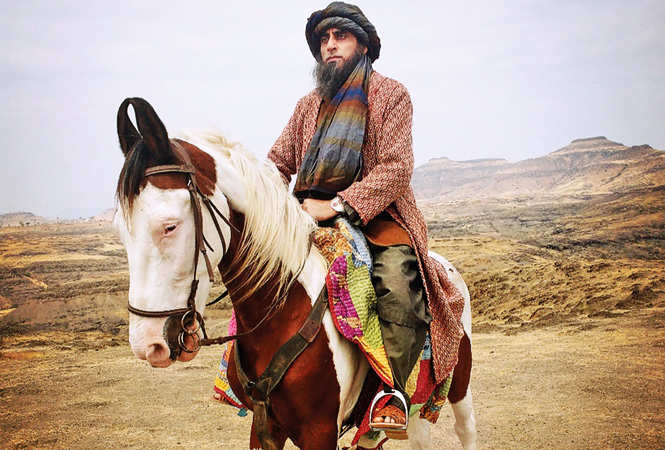Theatre might be his first love but actor Ashwath Bhatt is now making a habit of being seen in big budget films too. After getting noticed for his support act in 'Raazi', he is seen in a villainous turn in the recently-released war drama 'Kesari'. Ashwath plays the Orakzai chief Gul Badshah Khan, who was one of the leaders of the Afghan forces against the Sikh soldiers in the Battle of Saragarhi, on which the film is based.
On being asked where he drew the inspiration to play Gul Badshah Khan as there is very little literature on the warlord, Ashwath says he relied on director Anurag Singh’s vision for that. He says, “Sometimes you have to rely on the director’s vision and where your character fits in the puzzle that is envisioned by the director because he is seeing the whole picture. But I just knew that I did not want this portrayal to be a caricature of Afghans, the likes of which we have seen in Indian cinema far too often. So, we had a Pashto coach to help us with the diction and we read up on the history of the Anglo-Afghan War to know the context and motivation of the warriors there.†Ashwath adds that the film does not portray the Afghans just as evil villains. “The director Anurag was clear that he didn’t want to portray the Afghans as out-and-out villains and I respected that. The Afghans opposed the British because they treated them as invaders, who had divided their lands. This caused several tribes – who had never seen eye to eye – to come together and join their banners. It was their mahagathbandhan,†he quips.
Ashwath plays the Orakzai chief Gul Badshah Khan in 'Kesari'
Time and again, films across the world have portrayed Afghan soldiers as marauding hordes and this is where Ashwath feels 'Kesari' is different. He tells us, “The mistake films make is that they portray Afghans as brutes, as mindless, aggressive warriors. But they were much more than that. They went into battles with proper strategy and their hallmark was that they would wait for the enemy and then ambush them. If they had just relied on brutish strength, they wouldn’t have been able to withstand every opponent they faced in all of history. The British waged wars on them but never succeeded fully. The Soviets and Americans tried for years but did not have fully successful campaigns.†The Delhi-based actor adds that emphasising on the Afghans’ tactical knowledge only enhances the valour of the Indian soldiers in the battle, where 21 soldiers withstood against an army of 10,000. Ashwath adds, “This film shows the strategy, the planning they did, and that makes the feat of the Sikh soldiers at Saragarhi even more impressive. It wasn’t 21 soldiers against 10,000 brutes but 21 soldiers against an army of 10,000 trained warriors.â€
The Saragarhi fort depicted in the film was recreated in Wai, a town in Maharashtra, and the battle scenes were mostly shot during summer. The actor recounts, “We shot a big portion of the film in Wai, Maharashtra. The trouble with that is while you are dressed for the weather of Saragarhi, where it is usually minus 5 or 10 degree Celsius, you are shooting in the Maharashtra summer. We had all those robes and furs on us in 40 degree Celsius temperatures. Uske baad aadmi pehle saans le ya acting kare, yeh samajh nahi aata. It was tough shooting those battle scenes in that heat.â€
Ashwath Bhatt: I did not want my role in Kesari to be a caricature of Afghans




